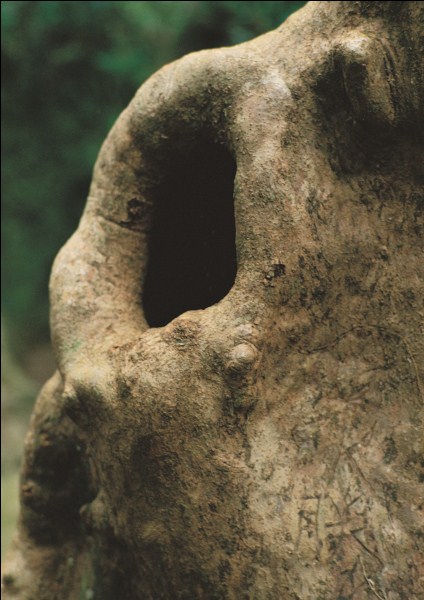Dear All,
How are you? This weeks article looks at the perennial themes of stress and anxiety, and takes what I think is a relatively new or at least novel approach to the issues that you may find interesting!
Yours in the spirit of an appropriate relationship to stress and anxiety,
Toby
 The Key to Dealing with Stress, the Challenge of Dealing with Anxiety
The Key to Dealing with Stress, the Challenge of Dealing with Anxiety
The key to dealing with stress is learning to take life less personally.
The key to deaing with anxiety is learning to take life more personally.
Here is what I mean:
The key to dealing with stress, such as for example you might face with living in a city is not to take the natural friction of such environments personally. This type of friction is simply a natural extension of living in a large community and it is unavoidable. If you take this natural friction personally, then it is going to cause you stress, if you don’t, then it won’t, or at least the stress will be manageable.
For example the old person who tries to jump the que at the bus stop is a natural feature of the city landscape, as are periodically obnoxious customers, co-workers and bosses. The heat and friction of daily life in a crowded 21st century environment is just that, heat and friction, no need to take it personally. Simply learn to detach appropriately and don’t make a problem out of the natural dynamics of the situation.
Similarly in our relationships with friends and family, a certain amount of friction is quite natural, it is not unusual and there is no need to make something unnecessarily personal of it.
In the same way it is quite natural to have a certain amount of friction in our mind as competing concerns crowd into our awareness and make noise to try and attract our attention.
Learning not to take natural friction personally is a major key to managing our stress, and learning to direct the natural stress of our daily situations in an appropriate, mindful and constructive direction.
The key to dealing with anxiety is to keep trying to answer the questions that your deeper sense of self is asking you about the meaning of your life. Anxiety (as I am defining it in this article) is the tension and apprehension that we feel in our mind when we feel our deeper, or evolving self pushing us to develop ourselves, to articulate meaningful action, to move toward our highest potential, to make positive changes, to think independently and courageously, to make a difference. Anxiety is the inner tension that we feel when we hear that inner evolutionary to move out of our comfort zone.
People who have no connection to their deeper self suffer only from stress in life, not anxiety. Anxiety is a call to action that comes from the depths of our being, a call to become who we really are, and to express that without fear or apprehension.
One major coping strategy that many people use to cope with their anxiety isconformity. They hope that by simply working hard at conventional goals that will give them conventional “respect” in society, they can simply be accepted by the status quo and thus they can avoid the challenge of doing something that is truly their own, truly an expression of their deeper self and deeper potential.
However, this superficial strategy of avoidance leaves the inner anxiety un-dealt with, and as a result many people find themselves with a sense of anxiety that is always there, gnawing at them, and they don’t even understand where it is coming from.
Mindful awareness of stress and anxiety
The basic “meditative moves” to deal with stress and anxiety are quite different:
- Dealing with stress mindfully involves observing when we have started to take the natural friction of our life personally, and consciously stepping back, detaching, releasing, and smiling at ourselves for taking the whole thing rather too seriously.
- Dealing with anxiety means each day to look into our deeper self and ask; “What is my evolutionary potential asking of me today?” The next thing to do is to start something/make the change/make the decision/begin to create that which is the answer to this question.
The two types of happiness that arise from dealing with stress and anxiety
- The happiness of dealing with our stress through detachment and not taking it personally is primarily a relaxational type of happiness, learning to go with the flow of life.
- The happiness that comes from dealing with anxiety is the deep and vibrant happiness of feeling fully alive, awake and engaged with life.
The consequences of not dealing with stress and anxiety:
Interestingly, the consequences of not dealing with stress and anxiety seem to be different and yet similar; the experience of irrational fears and projections in our mind.
- When we don’t deal with stress well, we find the days’ stressful events “sticking” to our mind, and we re-live them in a state of anger, frustration and fear.
- When we don’t live to our potential, the anxiety that this creates is a slightly more complex fear, a fear of our own power, and an absence of deeper self confidence, which causes us further anxiety, and makes it more and more difficult to discover what we really need to do in order to make our life a reflection of who we are and what we really want to give.
Conclusion
The main point that I think I am trying to make here is that stress and anxiety (as I am defining them in this article) are different problems that require different solutions.
- The principle solution to stress that I am putting forward in this article is the practice of appropriate detachment
- The principle solution to anxiety is the courage to engage more deeply with our idea of who we are, and act every day to make our life a reflection of the deeper meanings that we really wish to make our life an expression of.
© Toby Ouvry 2012, you are welcome to use or share this article, but please cite Toby as the source and include reference to his website www.tobyouvry.com
 Finding Permanence Within the Impermanent and Fulfillment Within the Dissatisfying
Finding Permanence Within the Impermanent and Fulfillment Within the Dissatisfying Three Levels of Self, Three Levels of Focus-in-Time
Three Levels of Self, Three Levels of Focus-in-Time





 Article of the Week:
Article of the Week: